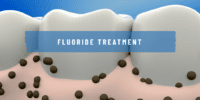Link Between Radon Gas and Lung Cancer (1987) – Samet: Recap and Summary: Showed Radon's Carcinogenic Effects in Homes

Radon gas is a silent danger that can be found in homes. It is a colorless and odorless gas that is produced by decaying uranium in the soil. When radon is released from the ground, it can seep into homes through cracks in the foundation or gaps in the walls. Once inside, radon can accumulate and reach dangerous levels.
Exposure to radon gas is a major cause of lung cancer, second only to smoking. When radon is inhaled, it can damage the cells lining the lungs, leading to the development of cancer over time. The risk of developing lung cancer from radon exposure is higher for individuals who smoke, as the combination of radon gas and tobacco smoke can significantly increase the chances of developing the disease.
Testing for radon gas is the only way to know if your home is at risk. Radon testing kits are readily available and can be purchased online or at home improvement stores. If high levels of radon are detected, mitigation measures can be taken to reduce the concentration of the gas in your home. These measures may include sealing cracks in the foundation, improving ventilation, or installing a radon mitigation system.
It is important for homeowners to be aware of the link between radon gas and lung cancer and to take steps to protect themselves and their families. By testing for radon and implementing mitigation measures if necessary, the silent danger of radon gas can be addressed, reducing the risk of lung cancer and ensuring a safer living environment.
Key Takeaways
- Radon gas is a silent danger found in homes, produced by decaying uranium in the soil, and can seep into homes through cracks in the foundation or walls.
- Radon exposure is a major cause of lung cancer, second only to smoking.
- Testing is the only way to know if your home is at risk, and high levels of radon can be detected through testing.
- Mitigation measures such as sealing cracks, improving ventilation, or installing a radon mitigation system can be taken to reduce radon concentration if necessary.
Dr. Jonathan Samet's Groundbreaking Study
Dr. Jonathan Samet's groundbreaking study on the link between radon gas and lung cancer presents a comprehensive and meticulously conducted analysis, providing invaluable insights into this critical health issue. Dr. Samet's methodology involved a rigorous examination of data from multiple sources, including epidemiological studies and experimental research. By analyzing these diverse data sets, he was able to establish a clear association between radon exposure and the development of lung cancer.
The significance of Dr. Samet's study can't be overstated. His research demonstrated that radon gas, a naturally occurring radioactive gas that can seep into homes from the ground, is a major contributor to lung cancer mortality. This finding has profound implications for public health, as radon is present in homes worldwide and poses a significant risk to individuals who are exposed to high levels over an extended period.
Furthermore, Dr. Samet's study provided crucial evidence for the implementation of radon mitigation measures in homes. By identifying high-risk areas and advocating for proper ventilation systems and sealing techniques, his research has helped to prevent countless cases of lung cancer.
Understanding the Link: Radon and Lung Cancer
The correlation between radon gas and lung cancer has been extensively researched, providing a wealth of scientific evidence that highlights the direct link between these two entities. Understanding this link is crucial for the prevention and detection of radon gas, as well as the prevention of lung cancer.
Here are three key points to consider:
- Radon gas detection:
- Radon gas is invisible and odorless, making it difficult to detect without proper equipment.
- Testing for radon gas in homes, workplaces, and other indoor environments is essential to identify potential exposure.
- Professional radon testing kits are available and can provide accurate measurements of radon levels.
- Radon gas prevention:
- Radon mitigation systems can be installed in homes with high levels of radon gas to reduce exposure.
- Proper ventilation and sealing of cracks and openings in buildings can prevent radon gas from entering.
- Building codes and regulations should include radon-resistant construction techniques to minimize radon entry.
The Carcinogenic Effects of Radon Gas
Radon gas has been unequivocally identified as a potent carcinogen, posing a significant risk to human health, particularly in relation to lung cancer. It is important to understand the carcinogenic effects of radon gas in order to implement effective radon gas regulation and testing measures.
To convey a deeper understanding, the following table provides a summary of the key aspects related to radon gas regulation and testing:
| Aspect | Description |
|---|---|
| Radon Gas Regulation | Refers to the establishment and enforcement of guidelines, standards, and policies to control and reduce radon gas exposure |
| Importance of Regulation | Ensures safe levels of radon gas in indoor environments, minimizing the risk of lung cancer and other health issues |
| Testing Methods | Various techniques used to measure radon gas levels, including short-term testing, long-term monitoring, and professional testing |
| Importance of Testing | Identifies areas with elevated radon gas levels, enabling mitigation strategies to be implemented for reducing exposure |
| Mitigation Strategies | Methods employed to reduce radon gas levels, such as sealing cracks, improving ventilation, and installing radon mitigation systems |
Radon Exposure in Homes: A Silent Danger
Exposure to elevated levels of radon gas in residential buildings can pose a hidden and potentially deadly threat to your health. Radon, an odorless, colorless, and tasteless radioactive gas, can seep into homes through cracks in the foundation, crawl spaces, and other openings.
Here are three silent dangers associated with radon exposure in homes:
- Increased Risk of Lung Cancer:
- Radon is the second leading cause of lung cancer, responsible for an estimated 21,000 deaths in the United States each year.
- When radon gas is inhaled, it decays and releases tiny radioactive particles that can damage lung tissue over time, leading to cancer development.
- Smokers who are exposed to radon face an even higher risk of developing lung cancer.
- Long-Term Health Implications:
- Prolonged exposure to radon gas can lead to chronic respiratory problems, such as difficulty breathing and persistent coughing.
- Studies have also suggested a potential link between radon exposure and other types of cancer, such as leukemia.
- Mitigation and Prevention:
- Testing your home for radon is essential to identify potential risks and take necessary measures to reduce exposure.
- Radon mitigation techniques, such as installing venting systems and sealing cracks in the foundation, can effectively lower radon levels.
Understanding these residential risks associated with radon exposure emphasizes the importance of taking proactive steps to protect yourself and your loved ones. Regular testing and implementing mitigation strategies can help ensure a safe and healthy living environment.
Key Findings From Dr. Samet's Research
Dr. Samet's research on the link between radon gas exposure and lung cancer risk has yielded significant findings.
Through extensive studies, it has been established that radon gas, commonly found in residential areas, poses a serious carcinogenic threat to individuals.
The research has provided compelling evidence of the harmful effects of long-term exposure to radon gas, emphasizing the urgent need for effective mitigation strategies to reduce the risk of lung cancer in affected populations.
Radon Gas Exposure
In his groundbreaking research, Dr. Samet unveiled significant findings regarding the correlation between exposure to radon gas and the development of lung cancer. This gas, which is colorless and odorless, can be found in homes, making it crucial to understand its health risks and the importance of radon gas detection.
Here are three key points to consider:
- Radon gas is a known carcinogen: Dr. Samet's research confirmed that prolonged exposure to radon gas increases the risk of developing lung cancer. This gas emits harmful radioactive particles that, when inhaled, can damage lung tissue and lead to the development of cancerous cells.
- Radon gas is prevalent in homes: Radon gas can seep into homes through cracks in the foundation, walls, and floors. It can accumulate to dangerous levels, especially in poorly ventilated areas such as basements. Therefore, it's essential to regularly test for radon gas levels in your home.
- Mitigating radon gas exposure: If high levels of radon gas are detected in your home, there are effective mitigation techniques available. These methods include installing a ventilation system, sealing cracks, and applying waterproof coatings to prevent radon gas from entering your living space.
Understanding the health risks associated with radon gas exposure and implementing proper detection and mitigation measures can help protect you and your loved ones from the potential dangers of this harmful gas.
Lung Cancer Risk
After establishing the harmful effects of radon gas exposure, Dr. Samet's research now focuses on the key findings regarding the increased risk of lung cancer associated with this dangerous gas.
Lung cancer is a serious and often fatal disease, and understanding the factors that contribute to its development is crucial for prevention and early detection.
Dr. Samet's research has shown that exposure to radon gas significantly increases the risk of developing lung cancer. Radon is a radioactive gas that's produced naturally from the decay of uranium in soil and rocks. It can enter homes through cracks in the foundation, and once inside, it can accumulate to high levels.
Therefore, lung cancer prevention efforts should include the detection and mitigation of radon gas in homes.
Residential Carcinogenic Effects
Based on Dr. Samet's research, it has been determined that residential exposure to radon gas has significant carcinogenic effects, particularly in relation to the development of lung cancer. Radon gas, which is a naturally occurring radioactive gas, can seep into homes through cracks in the foundation, gaps in walls, and other openings.
The following key findings from Dr. Samet's research shed light on the residential carcinogenic effects of radon gas:
- Radon gas detection: Dr. Samet's research emphasized the importance of radon gas detection in homes. Testing for radon levels can help identify areas with high concentrations of the gas, enabling homeowners to take appropriate measures to mitigate the risk.
- Indoor air quality: The research highlighted the impact of radon gas on indoor air quality. Elevated levels of radon gas can lead to poor air quality, which increases the likelihood of respiratory problems and lung cancer.
- Mitigation strategies: Dr. Samet's research also discussed various mitigation strategies that can be implemented to reduce radon gas levels in homes. These strategies include sealing cracks and openings, improving ventilation, and installing radon mitigation systems.
Understanding the residential carcinogenic effects of radon gas is crucial for promoting a safe and healthy living environment. Regular radon gas detection and appropriate mitigation measures can help protect individuals from the harmful effects of this radioactive gas.
Raising Awareness About Radon Gas
Raising awareness about the dangers of radon gas is crucial in preventing the development of lung cancer. Radon gas is a colorless, odorless, and tasteless radioactive gas that's formed from the natural decay of uranium in soil, rock, and water. It can enter homes through cracks in the foundation, walls, or floors, and can accumulate to high levels, especially in poorly ventilated areas. Exposure to high levels of radon gas for prolonged periods increases the risk of lung cancer, particularly in smokers.
Educating the public about the health risks associated with radon gas is essential to ensure that individuals take appropriate measures to protect themselves and their families. This can be achieved through various means, such as public awareness campaigns, educational materials, and community outreach programs. These initiatives should emphasize the importance of testing homes for radon levels and implementing mitigation measures if necessary.
In addition to raising awareness, it's important to provide individuals with the necessary tools and resources to take action. This includes information on how to test for radon gas, the availability of radon testing kits, and guidance on finding qualified professionals to mitigate high radon levels. By empowering individuals with knowledge and resources, they can make informed decisions to reduce their exposure to radon gas and lower their risk of developing lung cancer.
Taking Action: Protecting Against Radon
To protect yourself and your loved ones from the dangers of radon gas, it's crucial to implement various measures.
Firstly, you should conduct regular radon testing using reliable methods such as long-term detectors or short-term tests.
If high levels of radon are detected, immediate action must be taken to mitigate its presence. This can be achieved through techniques like soil suction, sealing cracks in the foundation, or installing a ventilation system to ensure proper air circulation.
Radon Testing Methods
There are several effective radon testing methods available to homeowners for taking action and protecting against radon gas. These methods allow you to accurately measure the level of radon in your home and take appropriate steps to mitigate any potential health risks.
Here are three recommended radon testing methods:
- Short-term radon testing: This method involves placing a radon detection device in your home for a period of 2-7 days. The device collects data on radon levels, which can then be analyzed to determine if further action is needed.
- Long-term radon testing: This method involves leaving a radon measurement device in your home for a minimum of 90 days. The device continuously monitors radon levels over an extended period, providing a more accurate representation of the average radon concentration.
- Continuous radon monitoring: This method utilizes electronic radon detectors that provide real-time measurements of radon levels. These detectors offer immediate feedback and can be connected to your smartphone or computer for easy monitoring.
Radon Mitigation Techniques
Radon mitigation techniques are crucial for effectively reducing radon gas levels and minimizing the associated health risks in your home. Radon gas is a colorless and odorless radioactive gas that can seep into buildings from the ground.
To ensure the safety of your home, it's important to first detect the presence of radon gas. Radon gas detection can be done using various methods, such as short-term and long-term testing kits, as well as continuous radon monitors.
Once radon gas is detected, mitigation techniques can be implemented to reduce its levels. Some common radon gas mitigation techniques include soil suction, sub-slab depressurization, and sealing cracks and openings in the foundation. These techniques are designed to create a pressure difference that prevents radon gas from entering the home.
It's essential to consult with a professional radon mitigation contractor to determine the most suitable technique for your specific situation and to ensure proper installation and maintenance.
Importance of Ventilation
Ventilation plays a crucial role in protecting against radon gas by facilitating the removal of indoor air pollutants, including radon, and ensuring a continuous supply of fresh air in your home. Here are some key benefits of ventilation in maintaining good indoor air quality:
- Dilution: Adequate ventilation helps dilute the concentration of radon gas and other pollutants in your home. By introducing fresh outdoor air, ventilation reduces the overall levels of harmful substances, improving the air quality.
- Removal: Ventilation systems, such as exhaust fans and air purifiers, actively remove radon gas and other pollutants from indoor spaces. These systems effectively capture and expel the contaminants, reducing their presence in your home.
- Circulation: Proper ventilation promotes the circulation of air, preventing stagnant pockets where radon gas can accumulate. By constantly circulating air, ventilation helps maintain a more even distribution of radon and other pollutants throughout your home.
The Ongoing Impact of Dr. Samet's Study
The groundbreaking study conducted by Dr. Samet continues to have a profound and lasting impact on our understanding of the link between radon gas exposure and the development of lung cancer. Dr. Samet's research provided crucial evidence that radon gas is a significant risk factor for lung cancer, particularly in residential homes. This study, published in 1987, revealed the long-term consequences of radon exposure and brought attention to the importance of radon mitigation strategies.
To fully appreciate the ongoing impact of Dr. Samet's study, it is essential to recognize the key findings that have shaped our understanding of radon gas and its carcinogenic effects. The table below summarizes the main contributions of Dr. Samet's research:
| Key Findings | Impact |
|---|---|
| Radon gas is a leading cause of lung cancer in non-smokers. | Raised awareness about the risks of radon exposure for individuals who do not smoke. |
| Radon levels in residential homes can reach high concentrations. | Led to increased testing and mitigation efforts in residential buildings. |
| The risk of lung cancer increases with prolonged exposure to radon. | Emphasized the importance of long-term exposure monitoring and mitigation strategies. |
| Radon mitigation techniques can effectively reduce indoor radon levels. | Encouraged the adoption of preventive measures to reduce radon exposure in homes. |
Dr. Samet's study laid the foundation for further research and policy development in the field of radon gas exposure. It has prompted regulatory agencies and public health organizations to implement measures aimed at reducing radon levels in residential buildings and promoting public awareness. The ongoing impact of Dr. Samet's study continues to save lives by informing individuals and communities about the dangers of radon gas and empowering them to take proactive steps to mitigate this risk.
Frequently Asked Questions
How Is Radon Gas Detected in Homes?
To detect radon gas in your home, you can use radon gas testing devices. These devices work by measuring the levels of radon gas in the air. It's important to regularly test for radon to ensure a safe living environment.
What Are the Symptoms of Radon Exposure?
You may experience symptoms such as coughing, wheezing, and shortness of breath as a result of radon exposure. Long-term effects can include an increased risk of lung cancer. It is important to test your home for radon levels.
Can Radon Gas Be Found in All Types of Homes?
You might be surprised to learn that radon gas can be found in all types of homes. Its concentration varies, but it's important to be aware of the health risks it poses. Stay informed and take action.
Are There Any Specific Regions or Areas That Are More Prone to High Levels of Radon Gas?
In specific regions, there can be higher levels of radon gas in homes. Factors such as geological composition and construction materials can contribute to these elevated levels.
How Can Individuals Reduce Their Exposure to Radon Gas in Their Homes?
To reduce your exposure to radon gas in your home, it is important to implement radon gas mitigation strategies. This involves conducting regular radon testing to identify high levels and taking steps to seal cracks and improve ventilation.









